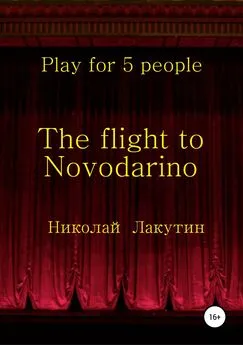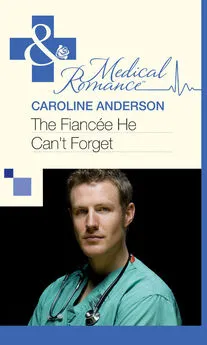Andrew Lobaczewski - Political Ponerology: A Science on the Nature of Evil Adjusted for Political Purposes
- Название:Political Ponerology: A Science on the Nature of Evil Adjusted for Political Purposes
- Автор:
- Жанр:
- Издательство:неизвестно
- Год:2006
- ISBN:нет данных
- Рейтинг:
- Избранное:Добавить в избранное
-
Отзывы:
-
Ваша оценка:
Andrew Lobaczewski - Political Ponerology: A Science on the Nature of Evil Adjusted for Political Purposes краткое содержание
Political Ponerology: A Science on the Nature of Evil Adjusted for Political Purposes - читать онлайн бесплатно полную версию (весь текст целиком)
Интервал:
Закладка:
show” to impress the uninitiated, thereby overshadowing the
actual phenomena which decide the quality, role, and fate of
the union. Particularly if such a description is colorful litera-
ture, it can furnish merely illusory or ersatz knowledge, thus
rendering a naturalistic perception and causative comprehen-
sion of phenomena more difficult.
One phenomenon all ponerogenic groups and associations
have in common is the fact that their members lose (or have
already lost) the capacity to perceive pathological individuals
as such , interpreting their behavior in a fascinated, heroic, or
melodramatic ways. The opinions, ideas, and judgments of
people carrying various psychological deficits are endowed
with an importance at least equal to that of outstanding indi-
viduals among normal people.
The atrophy of natural critical faculties with respect to
pathological individuals becomes an opening to their activities,
and, at the same time, a criterion for recognizing the associa-
tion in concern as ponerogenic. Let us call this the first crite-
rion of ponerogenesis.
Another phenomenon all ponerogenic associations have in
common is their statistically high concentration of individuals
with various psychological anomalies . Their qualitative com-
position is crucially important in the formation of the entire
union’s character, activities, development, or extinction.
POLITICAL PONEROLOGY
159
Groups dominated by various kinds of characteropathic in-
dividuals will develop relatively primitive activities, proving
rather easy for a society of normal people to break. However,
things are quite different when such unions are inspired by
psychopathic individuals. Let us adduce the following example
illustrating the roles of two different anomalies, selected from
among actual events studied by the author.
In felonious youth gangs, a specific role is played by boys
(and occasionally girls) that carry a characteristic deficit that is
sometimes left behind by an inflammation of the parotid glands
(the mumps). This disease entails brain reactions in some cases,
leaving behind a discreet but permanent bleaching of feelings
and a slight decrease in general mental skills. Similar results
are sometimes left behind after diphtheria. As a result, such
people easily succumb to the suggestions and manipulations of
a more clever individuals.
When drawn into a felonious group, these constitutionally
weakened individuals become faint-critical helpers and execu-
tors of the leader’s intentions, tools in the hands of more
treacherous, usually psychopathic, leaders. Once arrested, they
submit to their leaders’ insinuated explanations that the higher
(paramoral) group ideal demands that they become scapegoats,
taking the majority of blame upon themselves. In court, the
same leaders who initiated the delinquencies mercilessly dump
all the blame onto their less crafty colleagues. Sometimes a
judge actually accepts the insinuations.
Individuals with the above-mentioned post-mumps and
post-diphtheria traits constitute less than 1.0 % of the popula-
tion as a whole, but their share reaches 1/4 of juvenile delin-
quent groups. This represents an inspissation75 of the order of
30-fold, requiring no further methods of statistical analysis.
When studying the contents of ponerogenic unions skillfully
enough, we often meet with an inspissation of other psycho-
logical anomalies which also speak for themselves.
~~~
Two basic types of the above-mentioned unions should be
differentiated: Primary ponerogenic and secondary ponero-
75 To thicken by either evaporation or absorption of fluid. Diminished fluid-
ity, increased thickness. A concentration. [Editor’s note.]
160
PONEROLOGY
genic . Let us describe as primarily ponerogenic a union whose
abnormal members were active from the very beginning, play-
ing the role of crystallizing catalysts as early as the process of
creation of the group occurred. We shall call secondarily
ponerogenic a union which was founded in the name of some
idea with an independent social meaning, generally
comprehensible within the categories of the natural world view,
but which later succumbed to a certain moral degeneration.
This in turn opened the door to infection and activation of the
pathological factors within, and later to a ponerization of the
group as a whole, or often of its fraction.
From the very outset, a primarily ponerogenic union is a
foreign body within the organism of society, its character col-
liding with the moral values held or respected by the majority.
The activities of such groups provoke opposition and disgust
and are considered immoral; as a rule, therefore, such groups
do not spread large, nor do they metastasize into numerous
unions; they finally lose their battle with society.
In order to have a chance to develop into a large ponero-
genic association, however, it suffices that some human orga-
nization, characterized by social or political goals and an ideol-
ogy with some creative value, be accepted by a larger number
of normal people before it succumbs to a process of ponero-
genic malignancy. The primary tradition and ideological values
of such a society may then, for a long time, protect a union
which has succumbed to the ponerization process from the
awareness of society, especially its less critical components.
When the ponerogenic process touches such a human organiza-
tion, which originally emerged and acted in the name of politi-
cal or social goals, and whose causes were conditioned in his-
tory and the social situation, the original group’s primary val-
ues will nourish and protect such a union, in spite of the fact
that those primary values succumb to characteristic degenera-
tion, the practical function becoming completely different from
the primary one, because the names and symbols are retained.
This is where the weaknesses of individual and social “com-
mon sense” are revealed.76
76 Just because a group operates under the banner of “communism” or “so-
cialism” or “democracy” or “conservatism” or “republicanism”, doesn’t mean
POLITICAL PONEROLOGY
161
This is reminiscent of a situation psychopathologists know
well: a person who enjoyed trust and respect in their circles
starts behaving with preposterous arrogance and hurting others,
allegedly in the name of his already known, decent and ac-
cepted convictions, which have – in the meantime - deterio-
rated due to some psychological process rendering them primi-
tive but emotionally dynamic. However, his old acquaintances
– having known him for long as the person he was - do not
believe the injured parties who complain about his new, or
even hidden, behavior, and are prepared to denigrate them and
consider them liars. This adds insult to their injury and gives
encouragement and license to the individual whose personality
is undergoing deterioration, to commit further hurtful acts; as a
rule, such a situation lasts until the person’s madness becomes
obvious.
Ponerogenic unions of the primary variety are mainly of in-
terest to criminology; our main concern will be associations
that succumb to a secondary process of poneric malignancy.
First, however, let us sketch a few properties of such associa-
tions which have already surrendered to this process.
Within each ponerogenic union, a psychological structure is
created which can be considered a counterpart or caricature of
the normal structure of society or a normal societal organiza-
tion. In a normal social organization, individuals with various
psychological strengths and weaknesses complement each
other’s talents and characteristics. This structure is subjected to
diachronic77 modification with regard to changes in the charac-
ter of the association as whole. The same is true of a ponero-
genic union. Individuals with various psychological aberrations
also complement each other’s talents and characteristics.
The earlier phase of a ponerogenic union’s activity is usu-
ally dominated by characteropathic, particularly paranoid, indi-
viduals, who often play an inspirational or spellbinding role in
the ponerization process. Recall here the power of the paranoid
characteropath lies in the fact that they easily enslave less criti-
cal minds, e.g. people with other kinds of psychological defi-
that, in practice, their functions are anything close to the original ideology.
[Editor’s note.]
77 Over time; employing a chronological perspective. [Editor’s note.]
162
PONEROLOGY
ciencies, or who have been victims of individuals with charac-
ter disorders, and, in particular, a large segment of young peo-
ple.
At this point in time, the union still exhibits certain roman-
tic features and is not yet characterized by excessively brutal
behavior.78 Soon, however, the more normal members are
pushed into fringe functions and are excluded from organiza-
tional secrets; some of them thereupon leave such a union.
Individuals with inherited deviations then progressively take
over the inspirational and leadership positions. The role of
essential psychopaths gradually grows, although they like to
remain ostensibly in the shadows (e.g. directing small groups),
setting the pace as an éminence grise.79 In ponerogenic unions
on the largest social scales, the leadership role is generally
played by a different kind of individual, one more easily di-
gestible and representative. Examples include frontal charac-
teropathy, or some more discreet complex of lesser taints.
A spellbinder at first simultaneously plays the role of leader
in a ponerogenic group. Later there appears another kind of
“leadership talent”, a more vital individual who often joined
the organization later, once it has already succumbed to poneri-
zation. The spellbinding individual, being weaker, is forced to
come to terms with being shunted into the shadows and recog-
nizing the new leader’s “genius”, or accept the threat of total
failure. Roles are parceled out. The spellbinder needs support
from the primitive but decisive leader, who in turn needs the
spellbinder to uphold the association’s ideology, so essential in
maintaining the proper attitude on the part of those members of
the rank and file who betray a tendency to criticism and doubt
of the moral variety.
The spellbinder’s job then becomes to repackage the ideol-
ogy appropriately, sliding new contents in under old titles, so
78 An example would be a paranoid character who believes himself to be a
Robin Hood type character with a “mission” to “rob from the rich and give to
the poor”. This can easily transform to “rob from anyone to gain for the self”
under the cover of “social injustice against us makes it right”. [Editor’s note.]
79 A powerful advisor or decision-maker who operates secretly or otherwise
Читать дальшеИнтервал:
Закладка:










